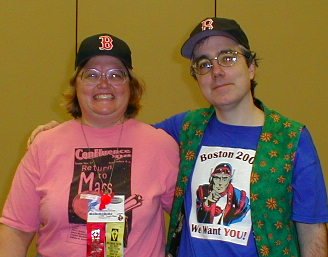Collapsium by Wil McCarthy
The novel opens several hundred years in the future – in the eighth decade of the Queendom of Sol. Bruno de Towaji, genius-level physicist (on a par with the best creations of John Campbell, if a bit more eccentric and at times cranky), inventor of collapsium (essentially, a stable material made of tiny black holes), billionaire (as a result of invention), is living a solitary existence on a man-made planet, circling a man-made sun, in the Kuiper Belt, where he performs dangerous physics experiments with exotic matter. He, and everyone else, are virtual immortals; the “fax” machines that are used as transport and replicators (sort of like Star Trek transporters, but using nano-technology) can also restore the human body as it transports it. He is called back to the inner solar system twice to save the project of his rival, Marlon Sykes. Sykes is supervising the construction of a vast collapsium ring around the sun, one that can be used to speed telecommunications and faxing, since the speed of light is much higher inside the ring. But the ring is breaking up, falling into the sun, something that could destroy the sun. The second time it happens, it’s clear that sabotage is the cause, though not who did it. But in both cases, Bruno comes up with a solution, saving the solar system.
Several years later, when Bruno, back in the Kuiper Belt reactivates his fax machine, he find a copy of himself waiting in the fax buffer. The copy has been damaged – tortured for years – by Marlon Sykes, who has forced him to betray Bruno and reveal his weaknesses. Muddy, as the copy calls himself (he considers himself a damaged version of Bruno, hence the wordplay on Bruno/Brown), tells him that Marlon has destroyed the collapsium ring and the fax network. Marlon isn’t just a resentful and somewhat anti-social scientist; he’s a megalomaniac, set on destroying the sun as part of an experiment. His destruction of the fax network, moreover, has made it nearly impossible for anyone to stop him.
The second half of the novel follows Bruno and Muddy as they set about doing just that. Together they come up with scientific marvels, including an inertialess drive, based in part of actual recent scientific views of the nature of mass and inertia. Amidst these superscience marvels, we have swordfights (one with what is essentially a magic sword), battles with hordes of robots, a fight with a giant spider, incredible rescues and escapes, and much more. As I noted earlier, there is a good bit of swashbucking in the novel. It’s all great fun, exiting, funny, and occasionally even frightening.
It does have a few weaknesses. Bruno is the only character developed enough to feel like a real, rounded person. He is delightfully entertaining. He lacks social graces, and his contempt for fashion (he views much of what passes as important social etiquette as really fad), something I can sympathize with. Yet he is also brilliant and resourceful, and looked up to by most (which infuriated Marlon). Muddy, on the other hand, is so whiny that you feel light slapping him (as does Bruno). That’s understandable, given his experience with Marlon, but it also gets annoying after a while. The queen is interesting but underdeveloped, as are several other side characters. We see enough of them to make us want to see more, yet not enough to truly come to know them as well as we’d like. And Marlon …. After Marlon, in section three, is revealed to be a super-villain, Bruno muses that extreme sociopaths are good at hiding their true natures. Perhaps, but nevertheless from the reader’s point of view it’s rather abrupt. He turns from a scientist who is quite talented but feels he is underappreciated working in the shadow of Bruno to essentially Lex Luthor. This also results in a change in tone – or perhaps I should say a change in the level of realism of things – from the more realistic events of the first two sections to the swashbuckling third, as the somewhat comic novel of manners (and of course superscience) turns into a cross between James Bond and the Three Musketeers (don’t’ forget the superscience). Don’t get me wrong. The second half of the book is great fun, but the transition between parts 1 and 2 and part 3 is a bit abrupt.
I also don’t by the whole “Queendom of Sol” rationale, but that’s a philosophical disagreement. I don’t believe that most people are as hard-wired to want a hierarchy as the novel states (though to be fair, it does fit well with swashbuckling tone of the second half and with the more restrained comedy of manners of the first).
Overall, this is a good novel. McCarthy knows his physics and knows how to work it into an entertaining novel. I plan to read the sequel.


0 Comments:
Post a Comment
<< Home